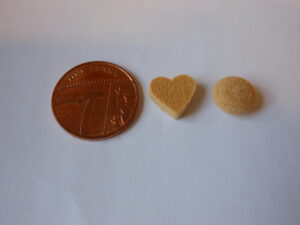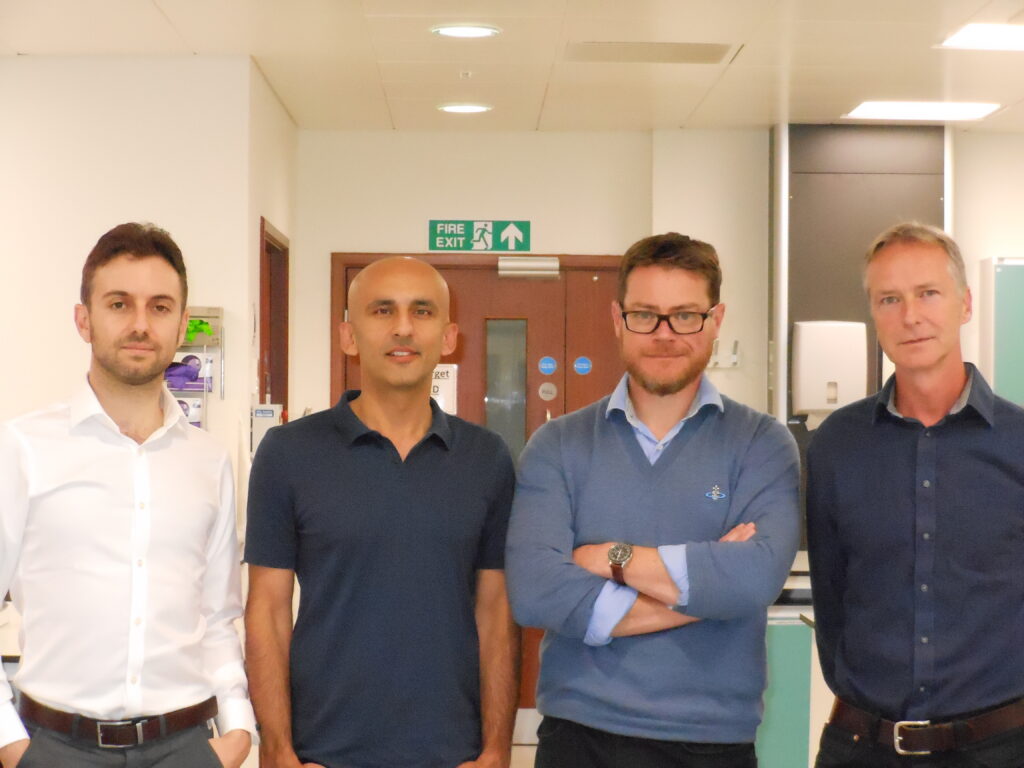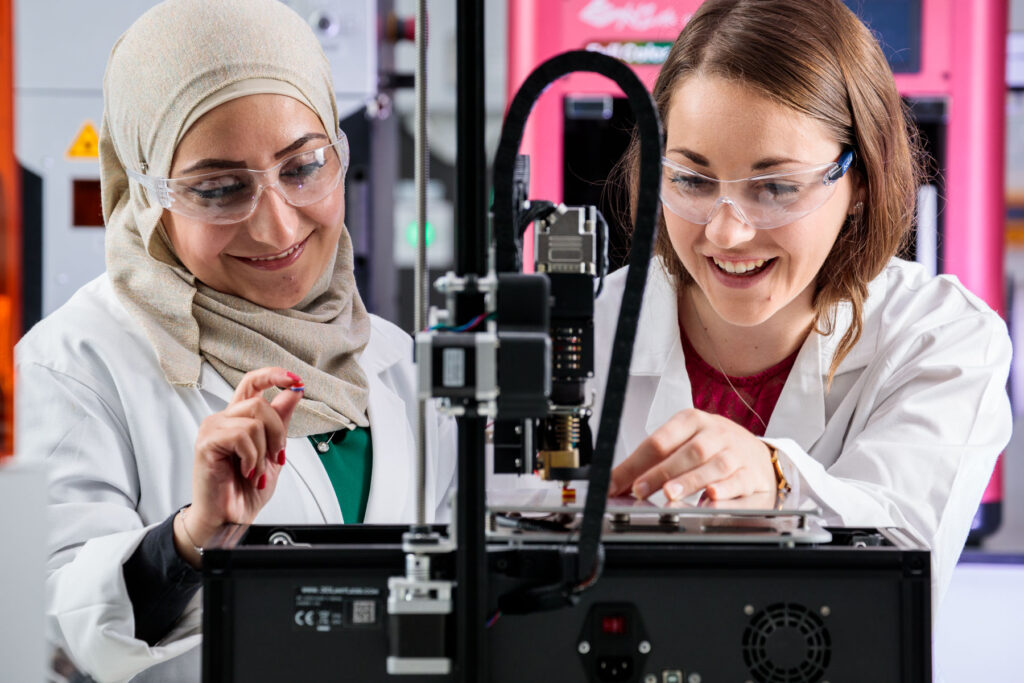With a focus on creating 3D printed medications, FabRx, a spin-out company from University College London’s School of Pharmacy, United Kingdom (UK), was founded in 2014 by academics who wanted to develop a different personalized patient treatment that could revolutionize the way people consume medicines.
 FabRx is the creator of Printlets, 3D printed tablets with customized dosages of medication, the result of over five years of research at the Advanced 3D Printing Lab at University College London (UCL). 3DPrint.com spoke to Alvaro Goyanes, Director of Development and co-founder of FabRx, to get a closer look at the journey to develop printed medicines and drug-loaded medical devices, as well as a glimpse into the future of the company.
FabRx is the creator of Printlets, 3D printed tablets with customized dosages of medication, the result of over five years of research at the Advanced 3D Printing Lab at University College London (UCL). 3DPrint.com spoke to Alvaro Goyanes, Director of Development and co-founder of FabRx, to get a closer look at the journey to develop printed medicines and drug-loaded medical devices, as well as a glimpse into the future of the company.
 It was a compelling time back in 2014, when Goyanes, a postdoctoral researcher at UCL, began investigating 3D printed medicines for oral drug delivery. After working for three years as a registered pharmacist, the Spanish native was curious about implementing technology, that had been so successful in other areas–such as engineering, food industry, and fashion–into pharmaceuticals. His first contact with 3D printers was as a researcher at the School of Pharmacy at UCL and since then, he has always thought about different ways he could apply it to his field of expertise. The transition from UCL researcher to FabRx co-founder was “quite obvious” to Goyanes: there was an urgent need to develop customized drugs, and very few companies were looking into this niche. So along with colleagues from the School of Pharmacy, Abdul Basit, Simon Gaisford, and Bill Lindsay, he moved on to the world of biotech startups.
It was a compelling time back in 2014, when Goyanes, a postdoctoral researcher at UCL, began investigating 3D printed medicines for oral drug delivery. After working for three years as a registered pharmacist, the Spanish native was curious about implementing technology, that had been so successful in other areas–such as engineering, food industry, and fashion–into pharmaceuticals. His first contact with 3D printers was as a researcher at the School of Pharmacy at UCL and since then, he has always thought about different ways he could apply it to his field of expertise. The transition from UCL researcher to FabRx co-founder was “quite obvious” to Goyanes: there was an urgent need to develop customized drugs, and very few companies were looking into this niche. So along with colleagues from the School of Pharmacy, Abdul Basit, Simon Gaisford, and Bill Lindsay, he moved on to the world of biotech startups.
How did you develop a pharmaceutical business venture?
I never thought that I would start my own company, but the entrepreneurial culture is well established at UCL. In fact, the other co-founders are all serial entrepreneurs and have successfully founded other startups in the past, so when we realized the potential impact of 3D printing in the pharmaceutical field, we decided to explore different business opportunities. Part of my time was spent conducting research at the lab with our great team at UCL, while focusing on expanding our business horizons. FabRx has also developed strong collaborations with external partners, including the University Clinical Hospital in Santiago de Compostela, Spain, where clinical studies are performed using our 3D printed medicines. As such, part of our research spans fundamental science, however, it also seeks opportunities for its translation to business ventures.
What was the main goal at FabRx?
In the beginning, we decided to concentrate on formulation development, evaluating the components of the 3D printed tablets, or printlets, and optimizing material selection, that is pharmaceutical excipients and drugs, to print medicines. We have since then realized that we need the appropriate 3D printers and printing software to print such medicines. As a result, we started to develop printlets based on personalized patient requirements. Now that we have experience in formulation development, we also aim to develop the right printer for pharmaceutical preparation. We acknowledged that in the pharma industry, to assure the quality and safety of medicines, it is necessary to regulate the development of formulations, and the equipment and software used to control it.
Why do you need to use different 3D printing technologies?
We have explored all 3D printing technologies in order to understand them and to see how their differences can potentially affect drug characteristics. For example, some technologies are not suitable because they degrade the drug, making the medicines inactive. Thanks to this research, we now know the different 3D printing technologies that can be used for the fabrication of small molecules or even biologics. We can also print very fast disintegrating printlets that dissolve quickly in the mouth, as well as printlets like conventional tablets, or chewable formulations with different colors or flavors that are more appropriate for children.
What are the benefits of Printlets?
Right now, we care about the quality and safety of medicines and are not really worried about the production costs. We are sure that these medicines will be safe and better than medicines that are prepared by, for example, manual compounding. Having better and more accepted medicines will aid patient adherence to their medications, increase therapy and as such, can reduce health problems and consequently, cost.
With 3D printing, it can be possible to reduce the stock of medicines in hospitals – with a single “ink”, a pharmacist will be able to print medicines with any dose on-demand. This will facilitate logistics in reducing cost, but more importantly, reduce the number of expired medicines.
How much have Printlets advanced?
Our group stands at the fore of 3D printing pharmaceuticals and aims to deliver these medicines to patients. We have recently published the first clinical study of a medicine 3D printed at a hospital that provides evidence that the technology works. We moved a 3D printer to the pharmacy department of the University Clinical Hospital in Santiago de Compostela and showed that it was possible to print in a hospital setting. The clinical study was a success as the 3D printed medicine was positively accepted by patients.
Do you notice there is a big demand for 3D printing of pharmaceutical products?
There is a clear need for personalized medicines, however, until now, an automatic system to prepare personalized medicines for the patients simply did not exist. 3D printing opens new opportunities in the field – it may now be possible to bring new medicines to the market that could not have been commercialized in the past.
What is the 3D printing community like in the UK?
The 3D printing community in the UK is well-establish – it is easy to find professionals and researchers bringing ideas to fruition. The government is also supportive; we were granted a project from Innovate UK (UK’s innovation agency) to develop a printer specially designed for pharmaceutics which supported our company’s vision. Being in London also helps us meet potential customers and investors.
The government is very supportive of our research, we have met with the Innovation Office from the Medicines and Healthcare products Regulatory Agency (MHRA), which aims to deliver better medicines to patients via 3D printing. As such, the challenge to implement the type of systems that we are developing in hospitals and industries in the UK may not be as large a hurdle as we previously thought.
What is the potential for your technology?
UK research is extremely strong and is miles ahead when compared to most research-led countries. 3D printing offers many opportunities in the pharma industry; it can be used for the manufacture of medicines that are prepared in industrial facilities, or can be implemented – and this would be the novelty – as a dispensing technology to fabricate personalized medicines of a specific dose at the dispensing point in hospitals. In the future, patients will have medicines manufactured in hospitals specifically for them with the right combination of drugs and the correct dose.
Which fields are interested in your innovation?
[Images: FabRx]We work mainly with material companies that ask us to evaluate their pharmaceutical materials as well as with pharma companies and hospitals that want to explore this technology to develop their own medicines. We have contacts with big pharma, however, larger companies are slow to adopt new technologies and often wait to see how such innovations evolve. We also engage in collaborations with universities and laboratories from different countries in all continents who mainly focus on oral formulations.
Subscribe to Our Email Newsletter
Stay up-to-date on all the latest news from the 3D printing industry and receive information and offers from third party vendors.
Print Services
Upload your 3D Models and get them printed quickly and efficiently.
You May Also Like
3D Printing News Briefs, June 11, 2025: Sustainability, Automotive Tooling, & More
We’re starting with sustainability news in today’s 3D Printing News Briefs, as EOS has strengthened its commitment on climate responsibility, and Zestep is making 3D printing filament out of eyewear...
3D Printing 50 Polymer Stand-In Parts for Tokamaks at the PPPL & Elytt Energy
Of all the world’s things, a tokamak is one of the hardest, most complex, expensive and exacting ones to make. These fusion energy devices make plasma, and use magnets to...
3D Printing News Briefs, May 17, 2025: Color-Changing Materials, Humanoid Robot, & More
We’re covering research innovations in today’s 3D Printing News Briefs! First, Penn Engineering developed 3D printed materials that change color under stress, and UC Berkeley researchers created an open source,...
Firehawk Aerospace Partners with JuggerBot 3D, Gets $1.25M from AFWERX for 3D Printed Propellants
Texas-based Firehawk Aerospace, an advanced energetic materials firm that works with aerospace and defense applications, announced a strategic partnership with JuggerBot 3D, an Ohio-based large-format 3D printer manufacturer. Together, the...





































